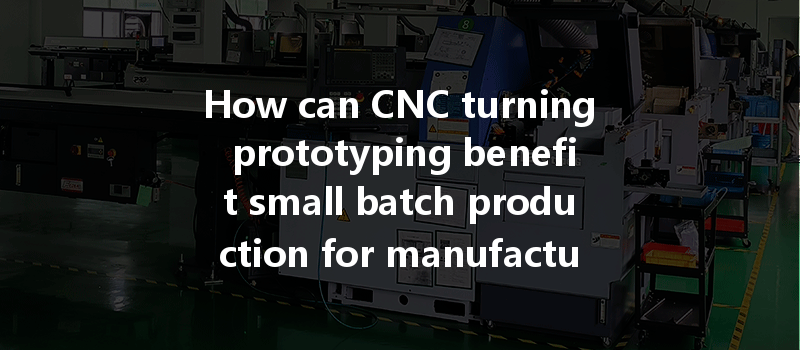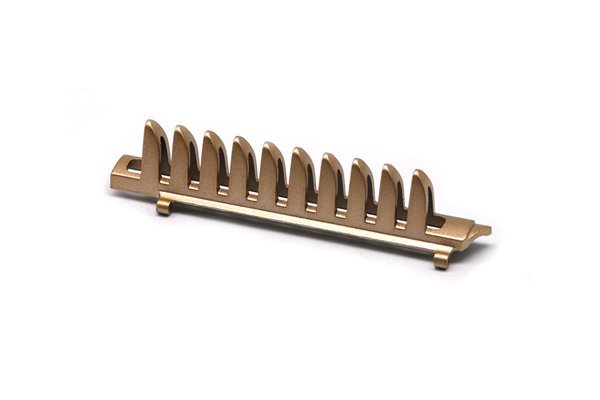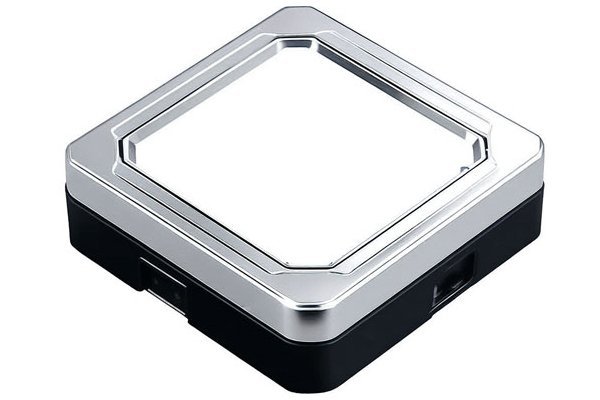Did you know that according to a study by the National Institute of Standards and Technology (NIST), small manufacturers that adopted advanced manufacturing technologies, such as CNC turning, recorded an average productivity increase of 30%? This remarkable statistic underscores the shift towards innovative manufacturing practices that not only boost efficiency but also cater to diverse market demands. With the ever-evolving landscape of manufacturing, how can CNC turning prototyping serve as a game-changer for small batch production?
In this comprehensive blog post, we will explore the various benefits of CNC turning prototyping for small-scale manufacturers, delve into the reasons why it is an advantageous solution for the challenges they face, and provide detailed strategies to maximize its utility.
What is CNC Turning?
CNC (Computer Numerical Control) turning is a manufacturing process where a rotating workpiece is shaped by a stationary cutting tool. This method allows for high precision and consistency, enabling manufacturers to create intricate shapes and sizes from a variety of materials. CNC machines are programmed with specific instructions that dictate how materials should be cut and shaped, allowing manufacturers to produce parts efficiently and accurately.
Prototyping in CNC Machining
Prototyping, in the context of CNC machining, refers to the development of a prototype or model that is used to evaluate a design’s feasibility, functionality, and marketability before full-scale production. CNC turning prototyping is particularly beneficial for producing small batch runs, offering manufacturers quick feedback on their designs.
a. Cost-Efficiency
One of the primary challenges small manufacturers face is managing costs. Traditional machining methods often require expensive setup and tooling costs, making small batch runs economically unviable. CNC turning prototyping offers a solution by minimizing these costs. With efficient programming and setup, manufacturers can achieve lower per-unit costs even in small quantities, making it feasible to produce prototypes without incurring substantial financial risks.
b. Flexibility and Customization
In today’s market, customers increasingly demand customized products. CNC turning allows for unparalleled flexibility, enabling manufacturers to make adjustments quickly. Whether it’s altering dimensions, materials, or designs, CNC turning prototyping grants manufacturers the agility to respond to customer preferences without the need for major overhauls in equipment or processes.
c. Quick Turnaround Times
The rapid pace of market demand necessitates quick responses from manufacturers. CNC turning prototyping significantly reduces lead times compared to traditional methods. By enabling efficient design adjustments and rapid iteration, manufacturers can speed up the development process, allowing them to bring products to market faster and stay competitive.
d. Precision and Quality
CNC turning machines are renowned for their precision. When creating prototypes, the level of detail and accuracy is crucial, especially when dealing with complex designs and specifications. CNC technology allows manufacturers to produce parts with tight tolerances, ensuring that the prototypes reflect true-to-design characteristics that are critical for performance testing.
e. Facilitating Innovation
CNC turning prototyping encourages innovation. The ability to produce prototypes quickly allows manufacturers to experiment with various designs and materials. By reducing the risk that comes with experimenting, manufacturers can explore new concepts, iterate designs effectively, and ultimately drive innovation in their offerings.
To maximize the benefits of CNC turning prototyping in small batch production, manufacturers should adopt a systematic approach. Here are the key steps involved in the process:
a. Conceptualization and Design
The first step is to develop a detailed design of the prototype. Using Computer-Aided Design (CAD) software, manufacturers can create 3D models that illustrate their concepts. This stage is critical because it sets the foundation for all subsequent processes.
b. Prototyping Strategy Development
Once the design is finalized, manufacturers must formulate a prototyping strategy. This includes selecting the appropriate CNC turning machinery, determining the necessary materials, and setting timelines for production. Each decision plays a significant role in streamlining the process and ensuring the prototype meets expectations.
c. Programming the CNC Machine
Next, the newly created design files need to be converted into machine-readable code—often referred to as G-code. This code provides the CNC machine with instructions on how to execute the design, ensuring precision in machining.
d. Machining the Prototype

With the machine programmed, manufacturers can proceed to the actual machining process. The CNC turning machine creates the prototype by precisely cutting, drilling, and shaping the workpiece according to the specifications dictated by the CAD file. During this stage, regular inspections should be carried out to ensure the prototype’s accuracy.
e. Testing and Evaluation
Testing the prototype is crucial to ensure its functionality and adherence to design specifications. Manufacturers should conduct thorough assessments, including performance tests and stress analyses, to identify any potential weaknesses or flaws in the design.
f. Iteration and Finalization
Based on feedback from testing, manufacturers can iterate on their design. CNC turning’s flexibility allows for quick modifications, enabling multiple versions of a prototype to be produced rapidly. Once the prototype meets all specifications and passes all tests, it can be finalized for mass production.
To illustrate the effectiveness of CNC turning prototyping in small batch production, let’s look at some real-world applications across various industries:
a. Aerospace Industry
In the aerospace sector, strict regulations and high-performance standards make prototyping essential. CNC turning is utilized to develop lightweight, high-strength components from specialized materials like titanium and aluminum. Prototyping allows aerospace engineers to refine designs, ensuring parts meet exacting tolerances and performance criteria before committing to production.
b. Medical Devices
The medical industry relies on precision-machined components to ensure patient safety and product reliability. CNC turning prototyping enables manufacturers to create intricate medical devices, such as surgical instruments and implants, that adhere to stringent regulatory requirements. The ability to quickly iterate on designs ensures that medical devices remain at the forefront of innovation.
c. Automotive Sector
The automotive industry also benefits significantly from CNC turning prototyping. Manufacturers use this method to design and test various components, such as engine parts and specialized fittings. Quick turnaround times in prototyping facilitate the rapid development of innovative vehicle features while meeting market demands efficiently.
To take full advantage of CNC turning prototyping in small batch production, manufacturers can implement several strategies:
a. Invest in Training and Skill Development
Ensuring that employees are well-trained in CNC technology is crucial. Investment in skill development can lead to higher efficiency and lower error rates, ultimately enhancing the quality of prototypes produced.
b. Embrace Integrated Software Solutions
Utilizing integrated software solutions that combine CAD and CAM (Computer-Aided Manufacturing) functionalities can streamline the transition from design to machining. By using such software, manufacturers can reduce lead times and errors in the programming phase, enhancing overall productivity.
c. Regularly Maintain CNC Equipment
Regular maintenance of CNC machinery is essential to ensure consistent performance. By adhering to routine maintenance schedules, manufacturers can prevent costly downtime and extend the lifespan of their equipment.
d. Foster a Culture of Continuous Improvement
Manufacturers should cultivate a culture that encourages continuous improvement and innovation. By promoting teamwork, open communication, and feedback, organizations can optimize CNC turning processes and embrace innovative prototypes that better meet customer demands.
In the rapidly changing landscape of manufacturing, CNC turning prototyping has emerged as a vital tool for small batch production, offering numerous benefits that cater to the modern demands of efficiency, cost-effectiveness, and innovation. Streamlined processes, high precision, rapid turnaround times, and flexibility contribute to manufacturing success and enable manufacturers of all sizes to thrive in competitive markets.
As we’ve explored, adopting CNC turning prototyping isn’t just a smart move—it’s a necessary one for manufacturers aiming for growth, efficiency, and enhanced product quality. By investing in CNC technology and embracing the prototyping process, manufacturers can ensure they meet evolving customer demands while fostering innovation and remaining competitive in their respective industries.
As you consider the implications of CNC turning prototyping, keep in mind that the benefits it offers are transformative and, when implemented effectively, can position manufacturers for sustained success now and in the future.






